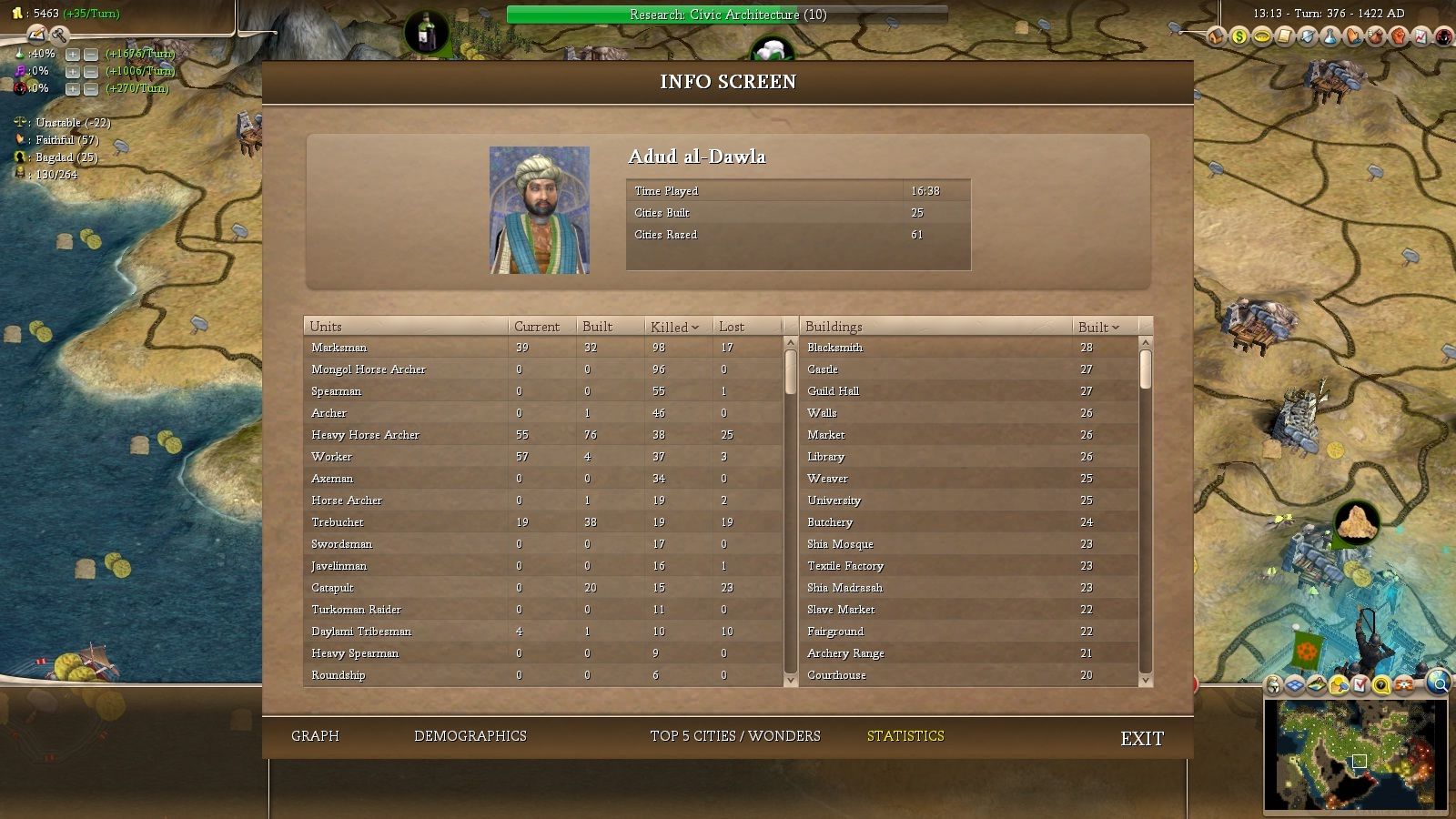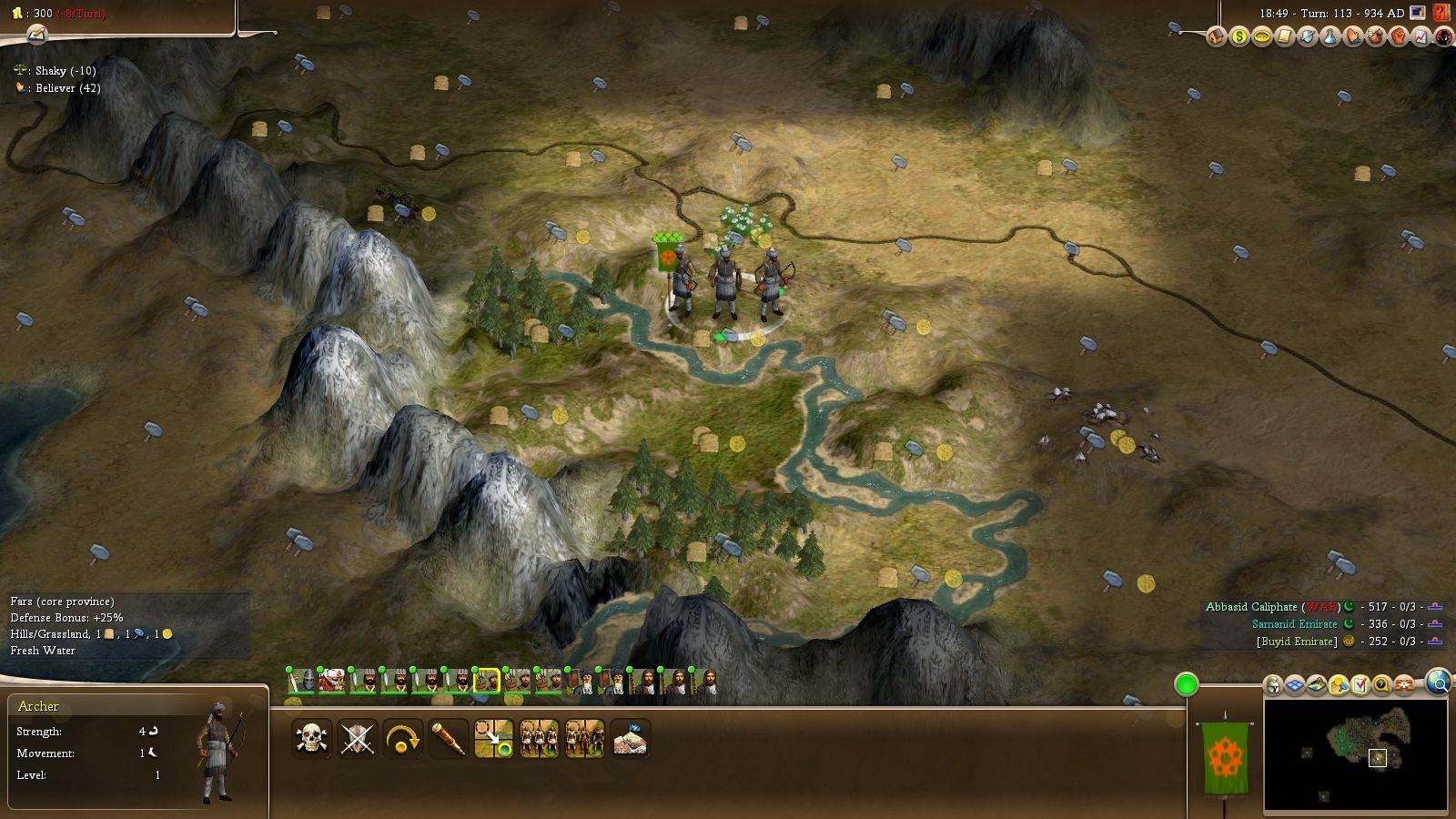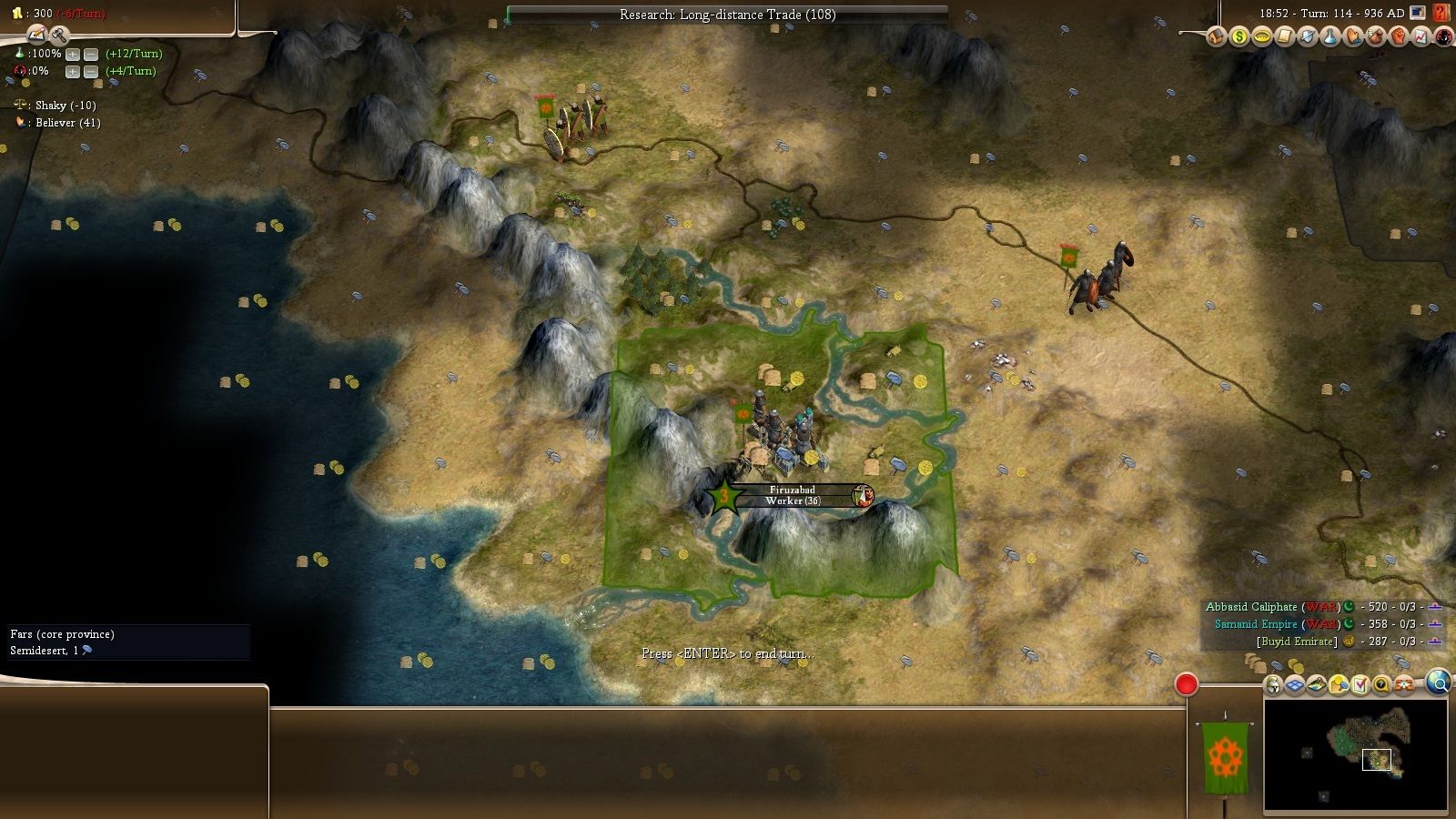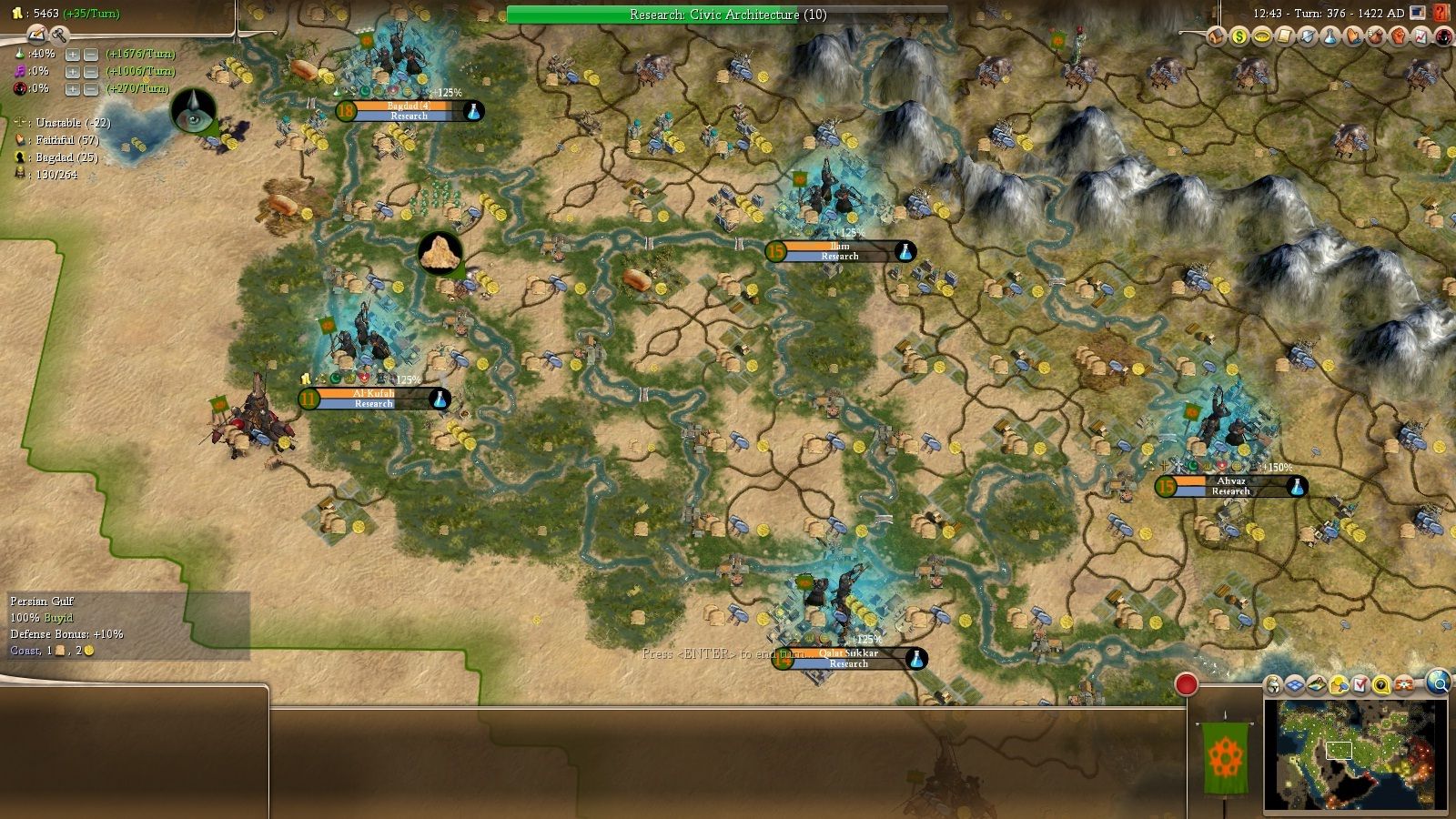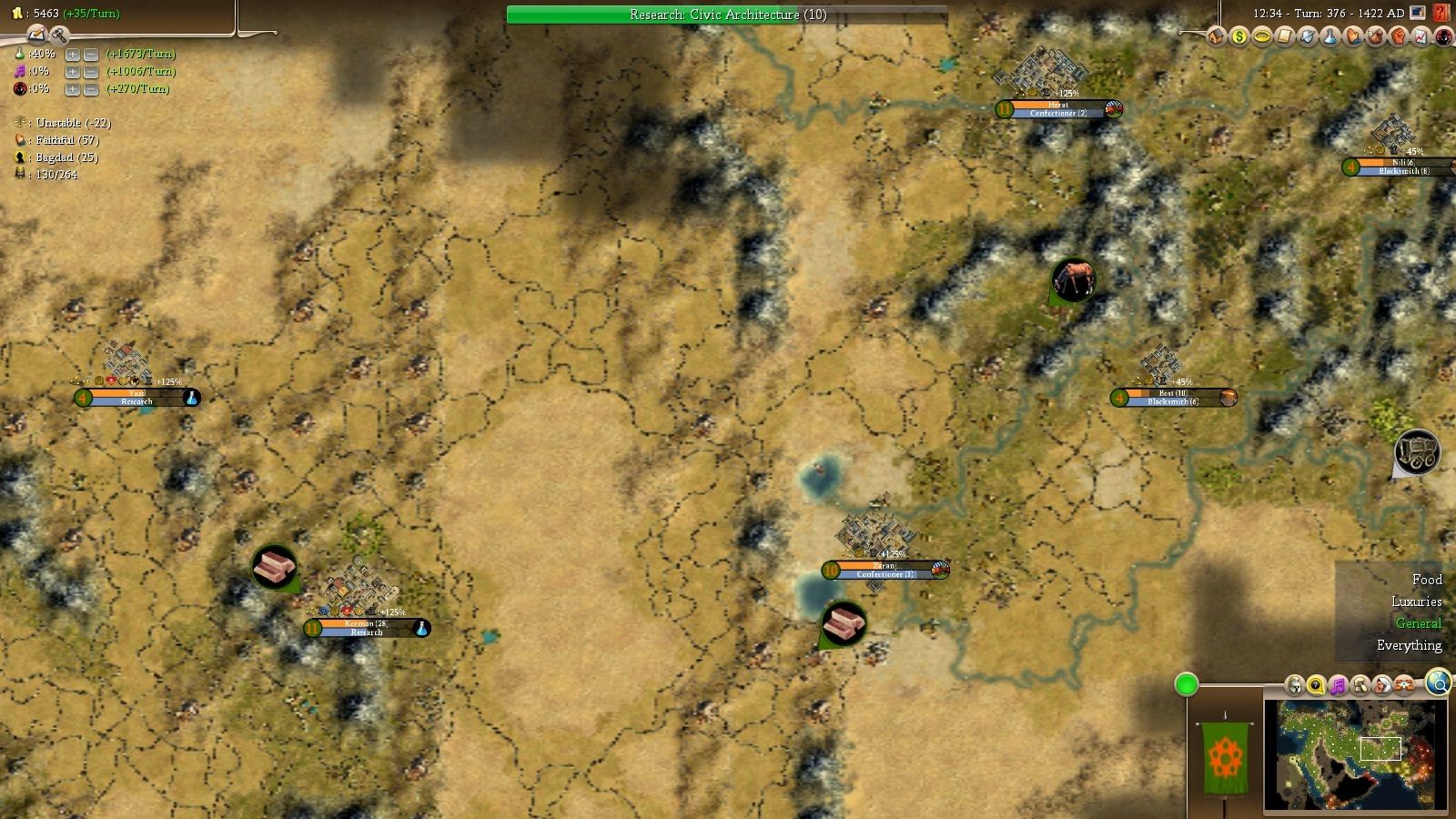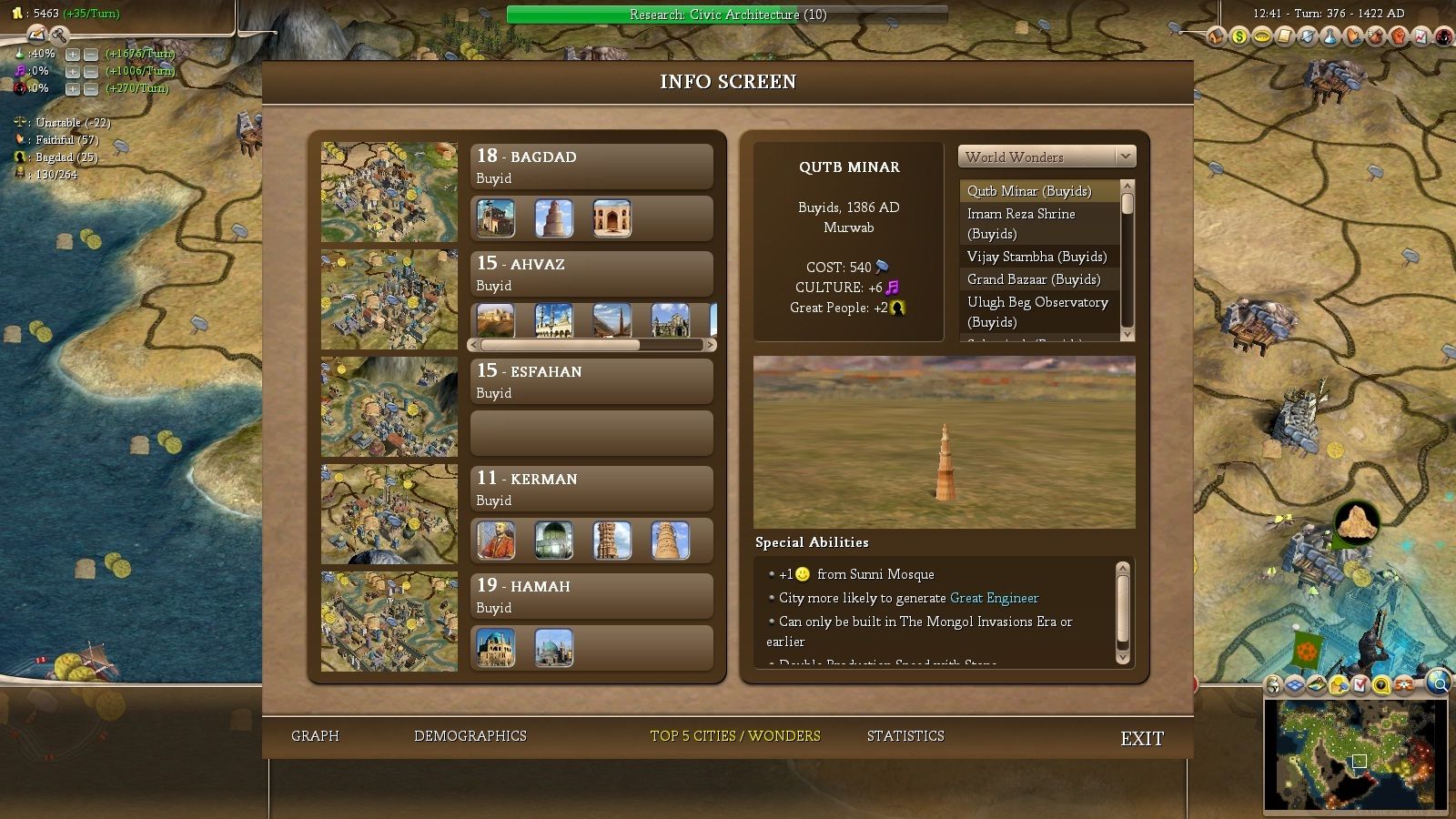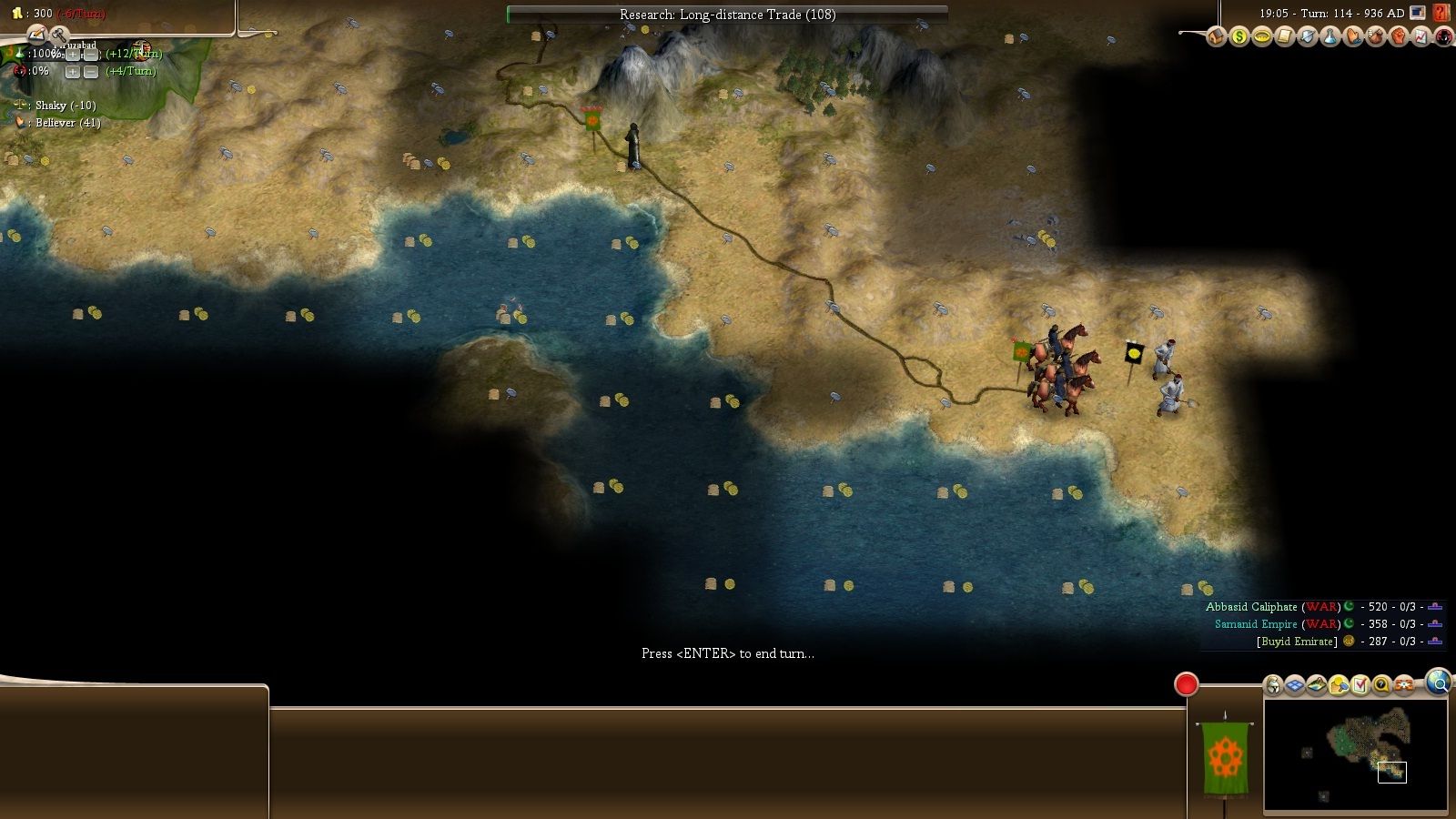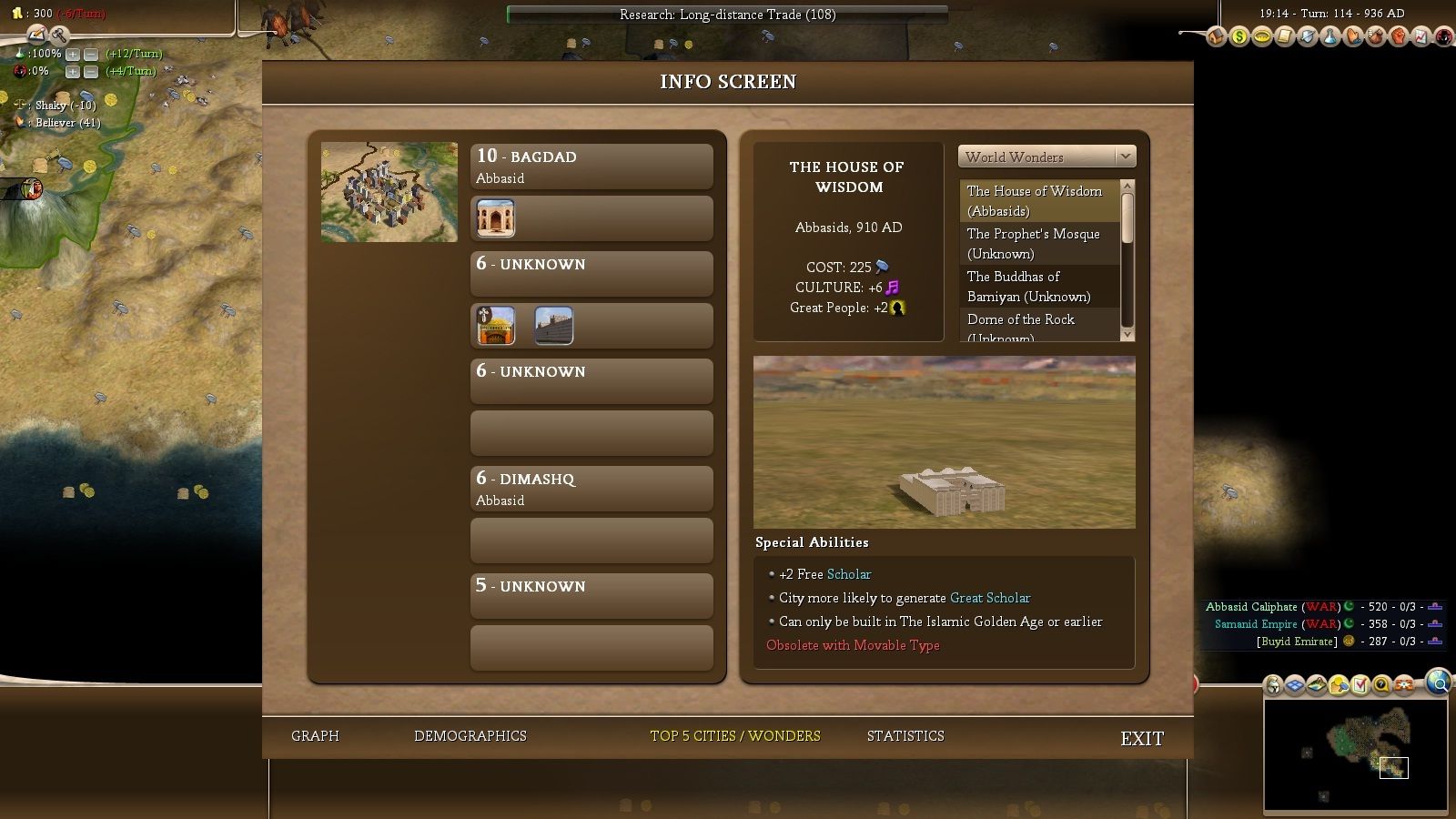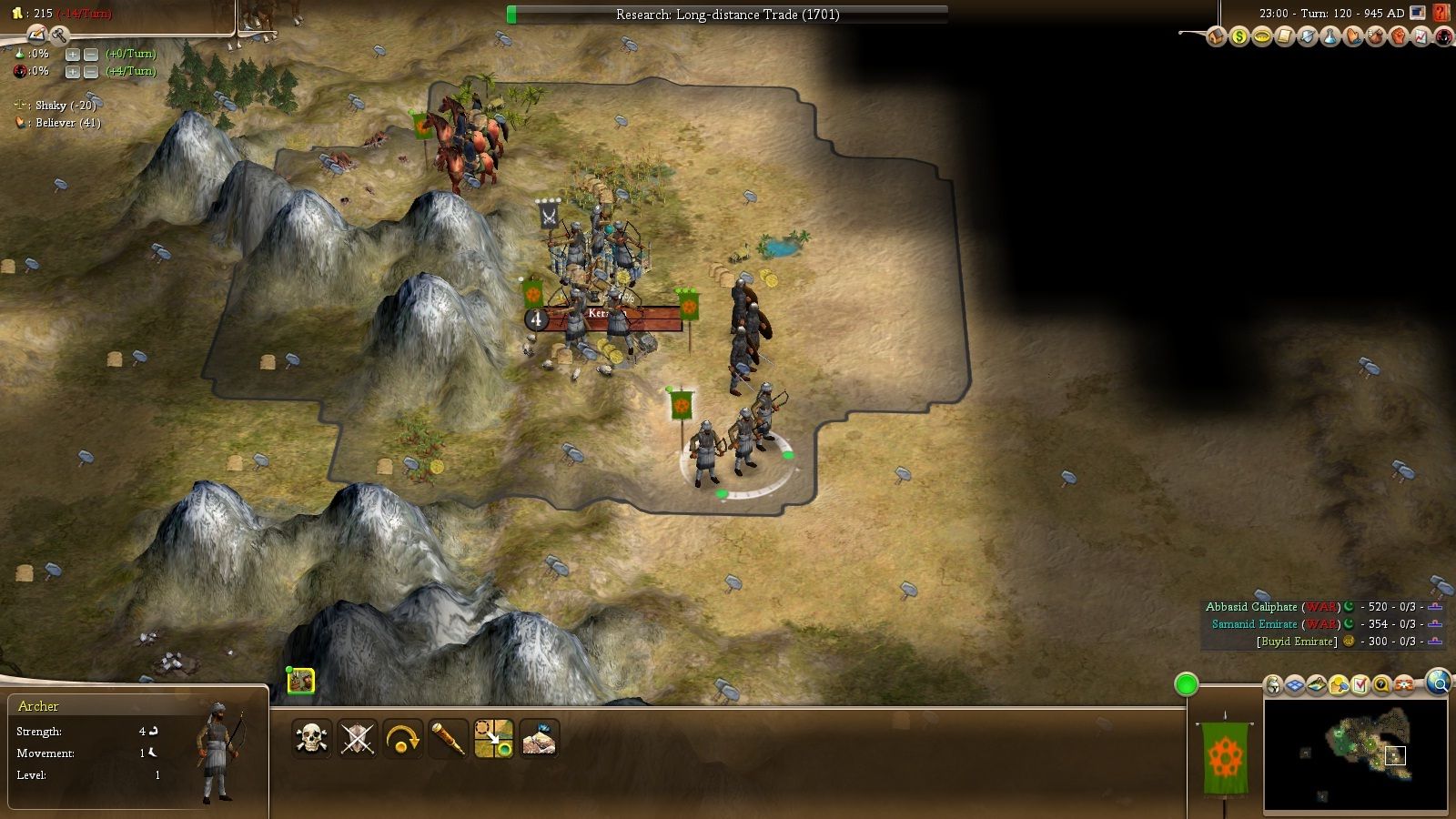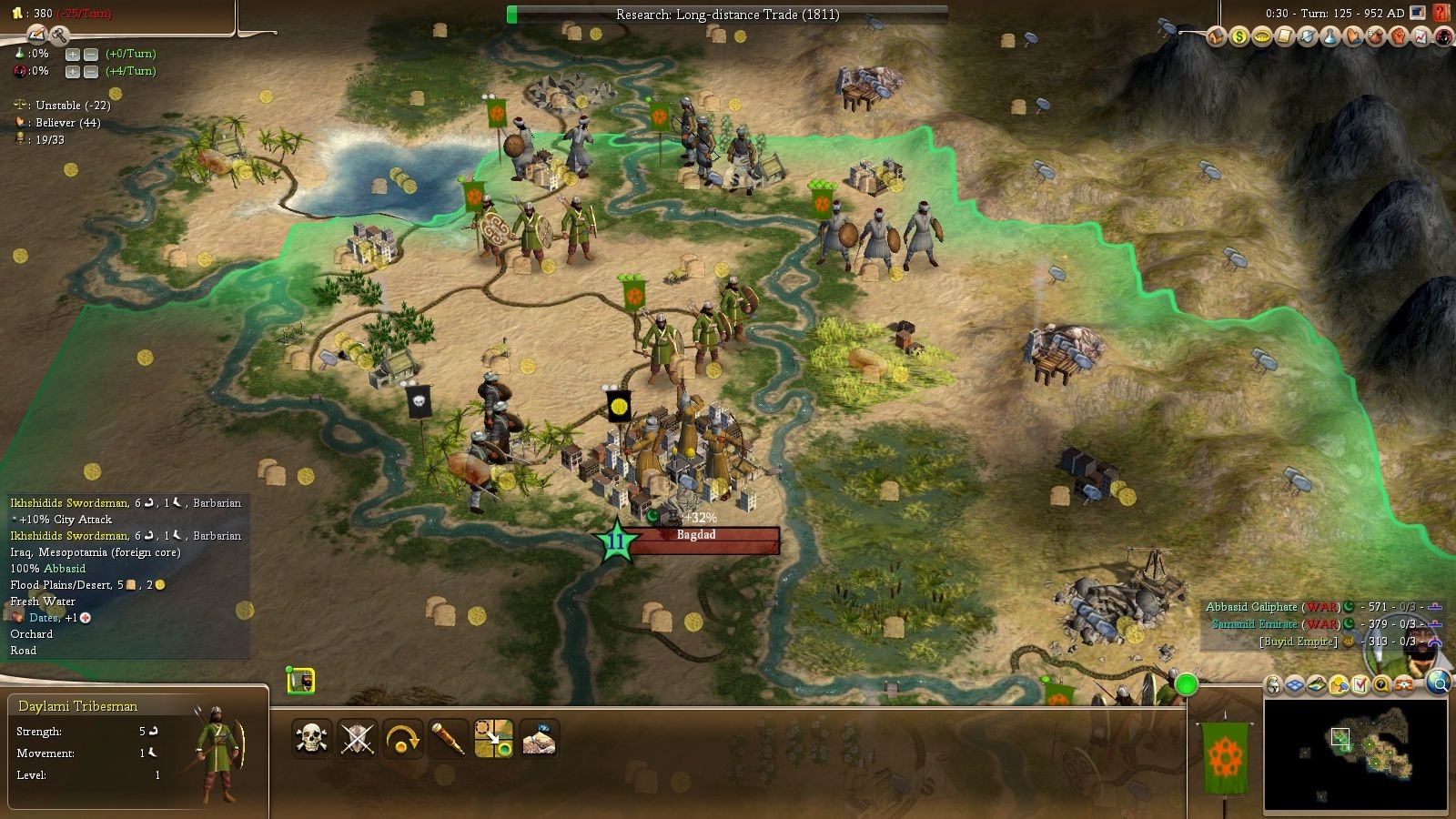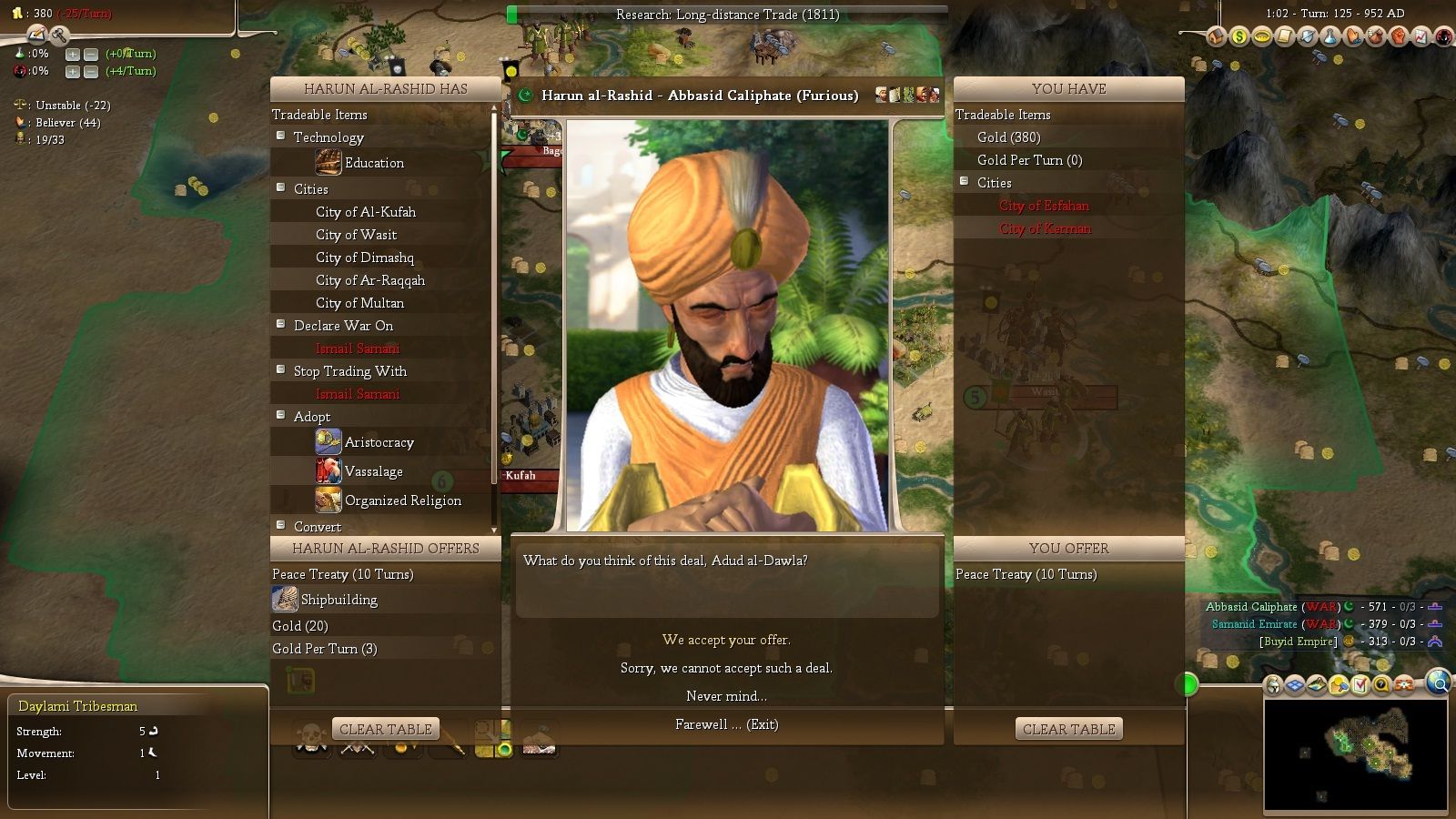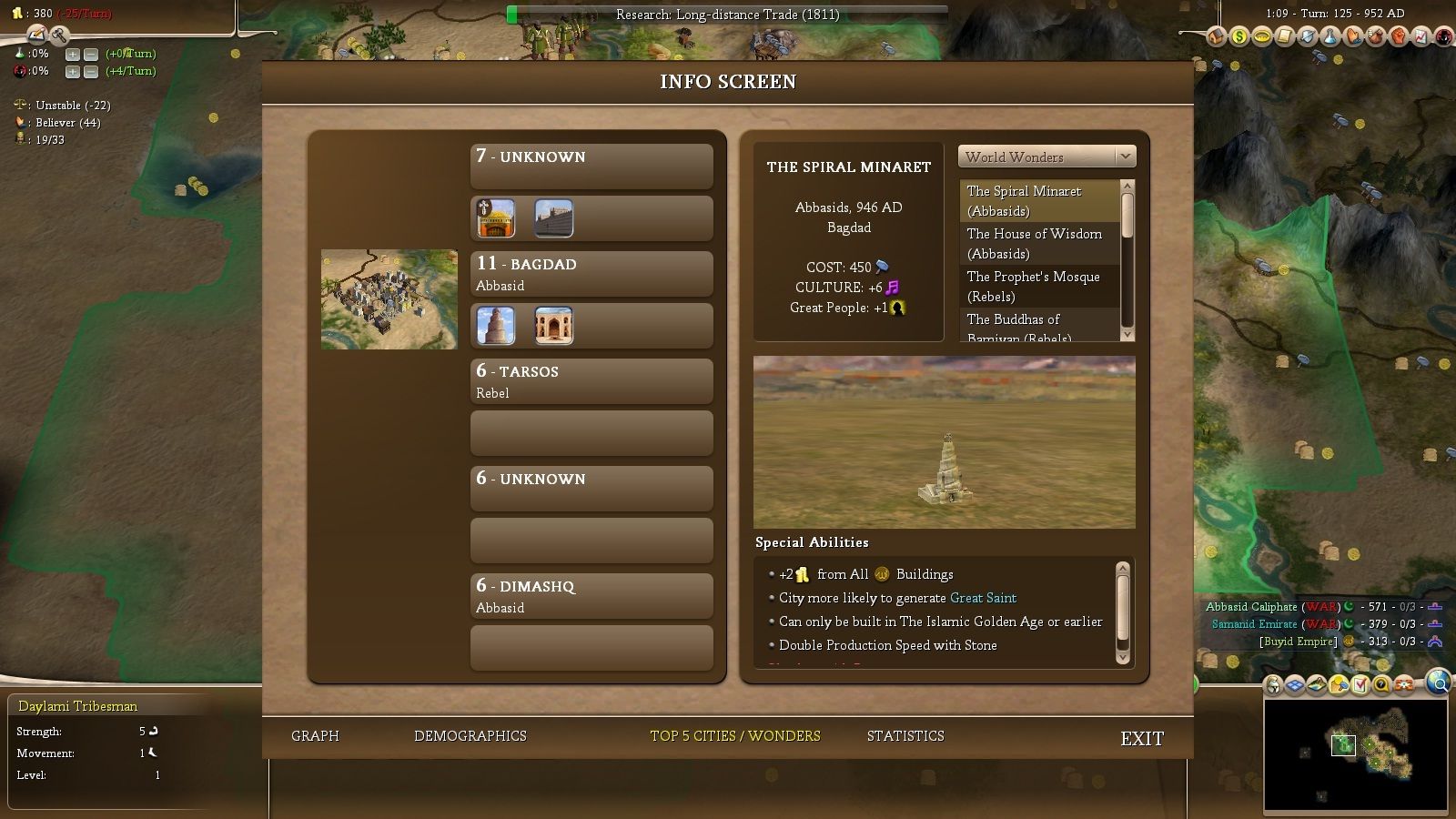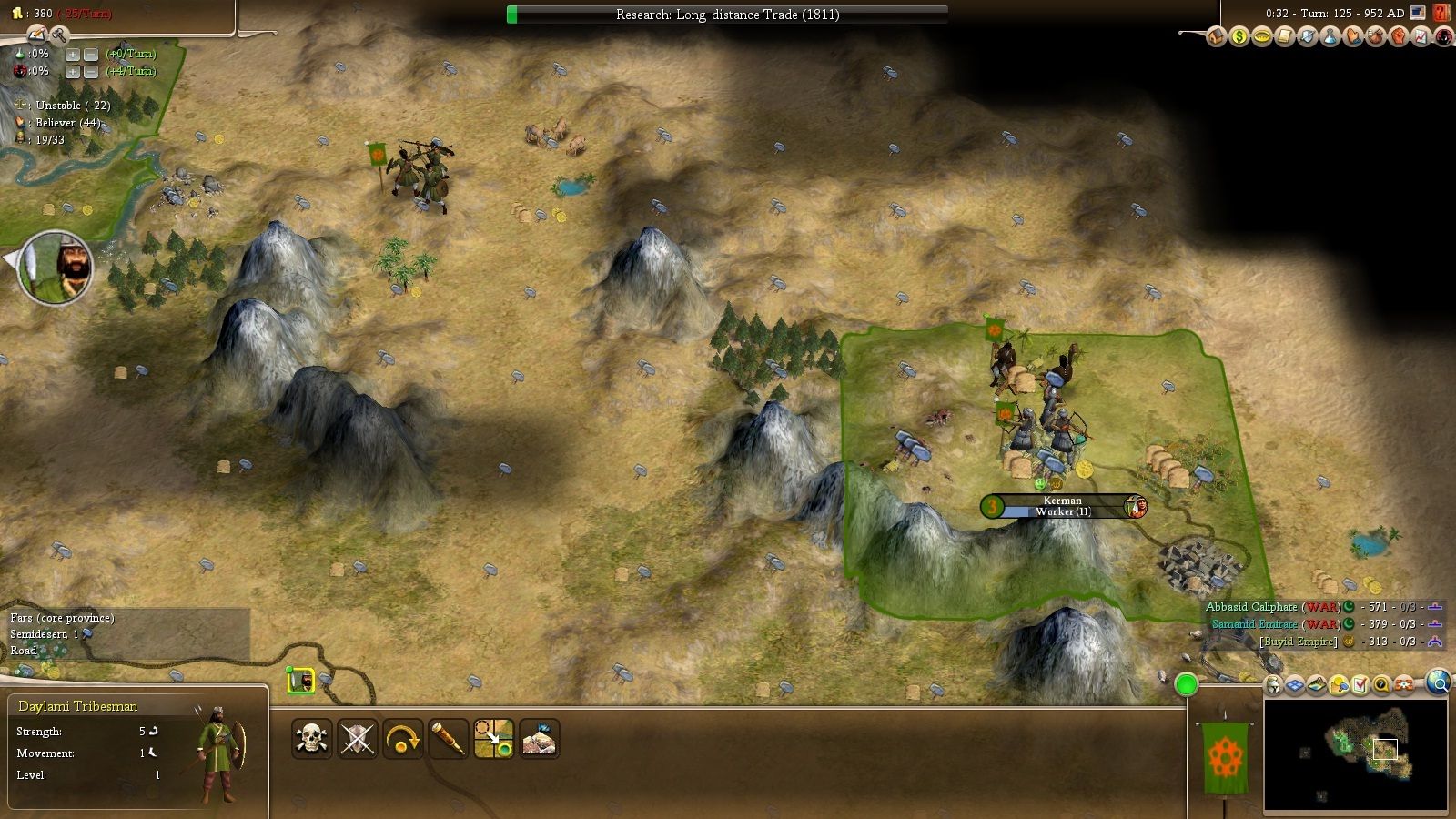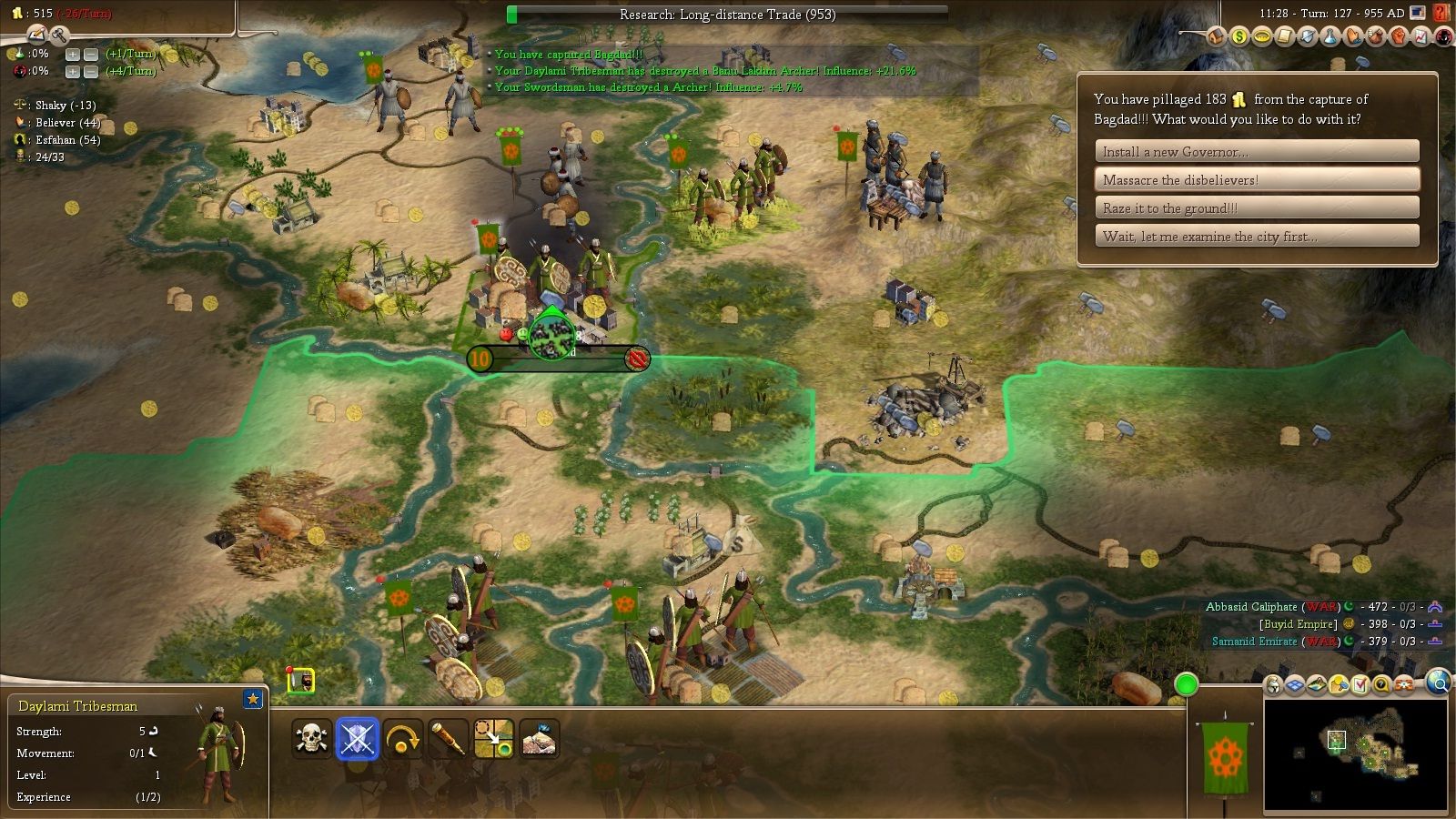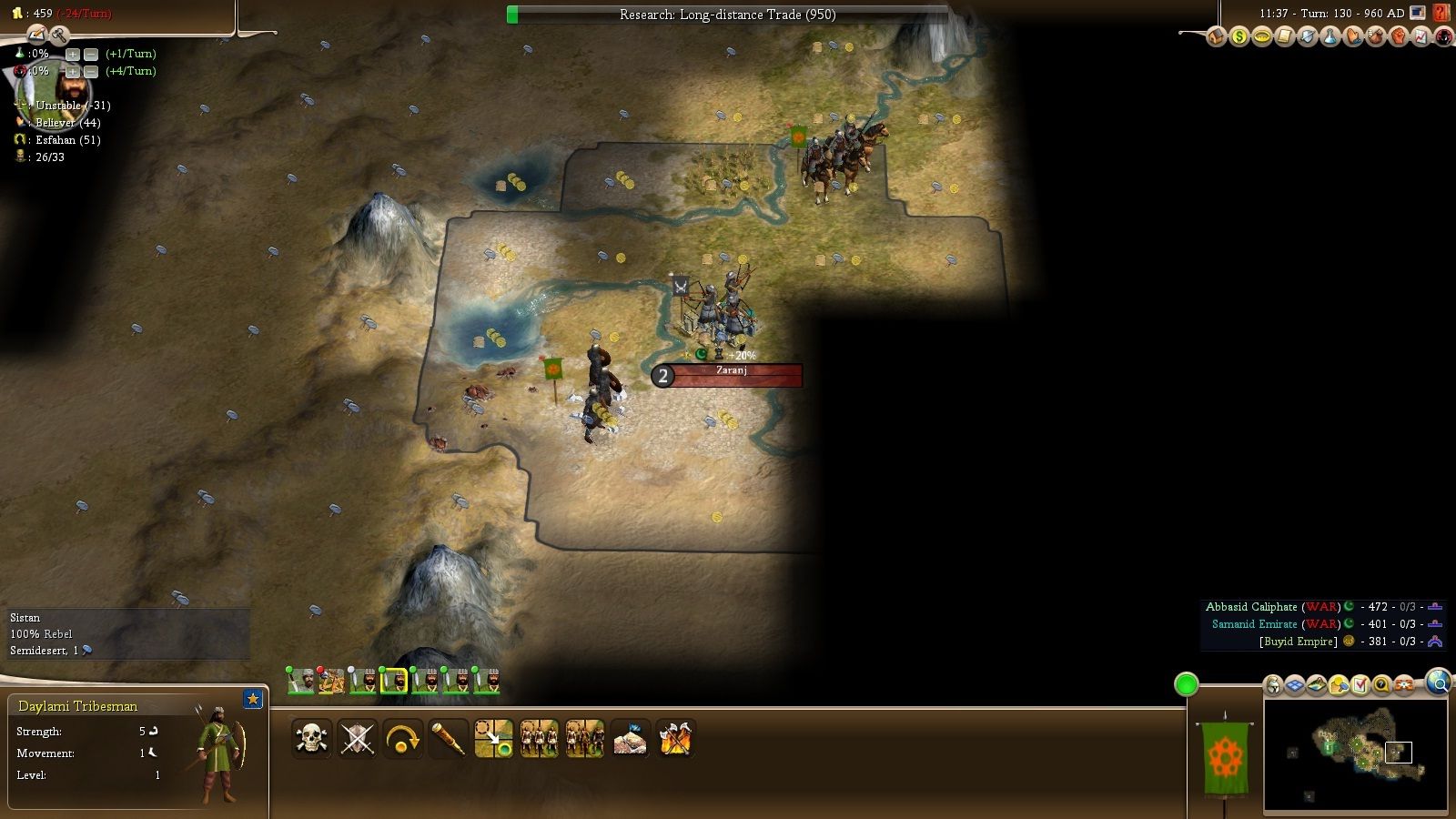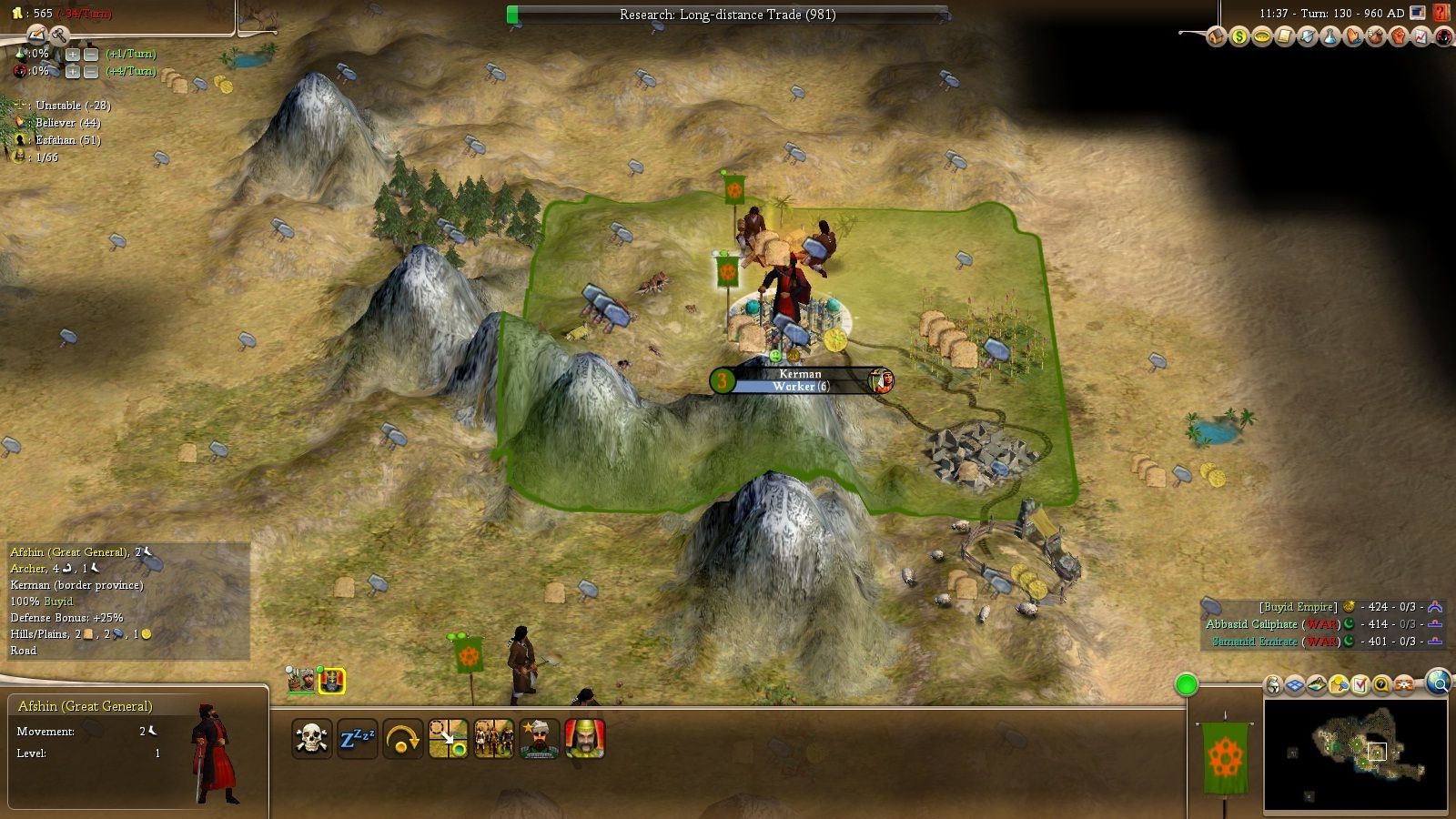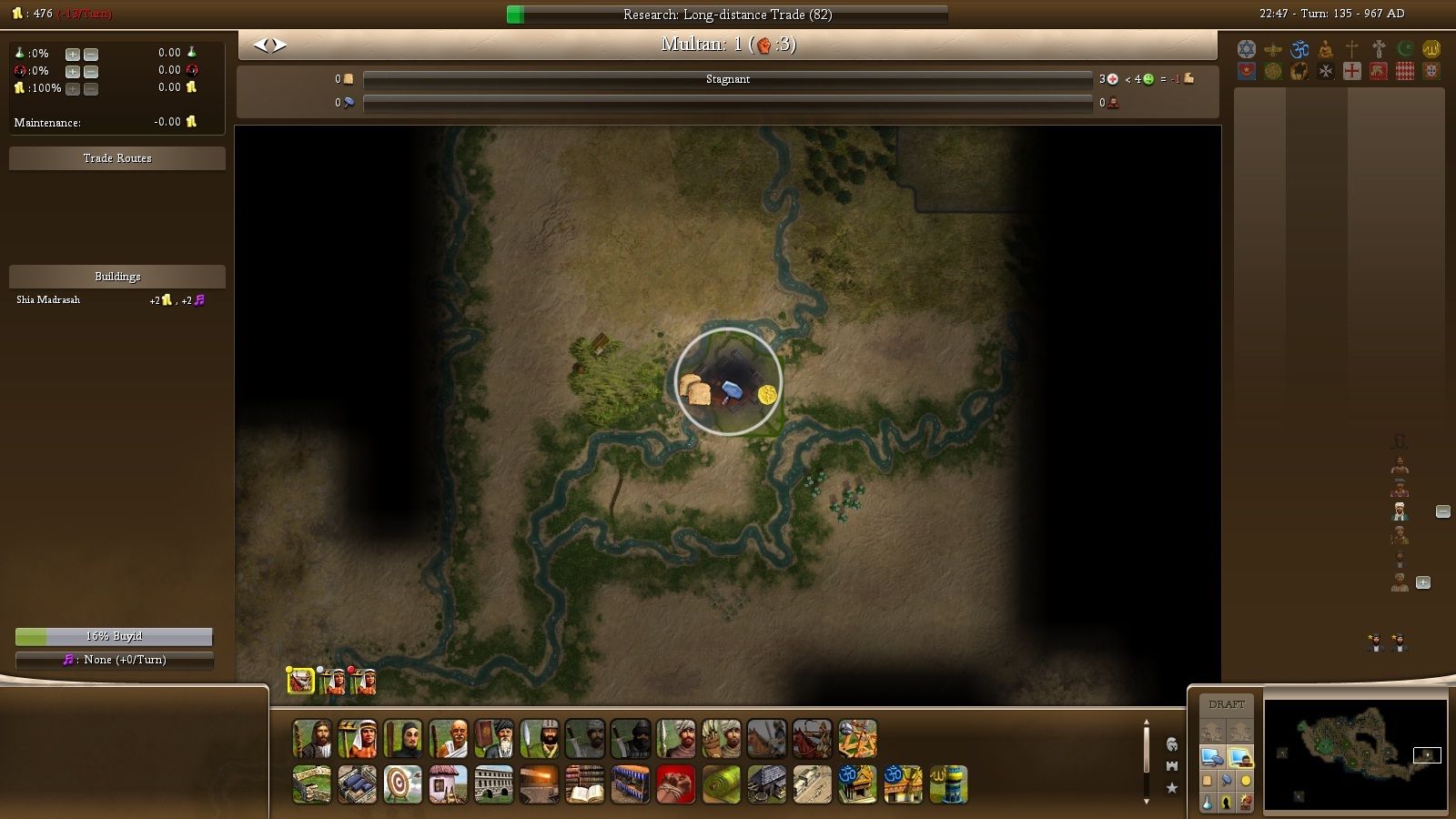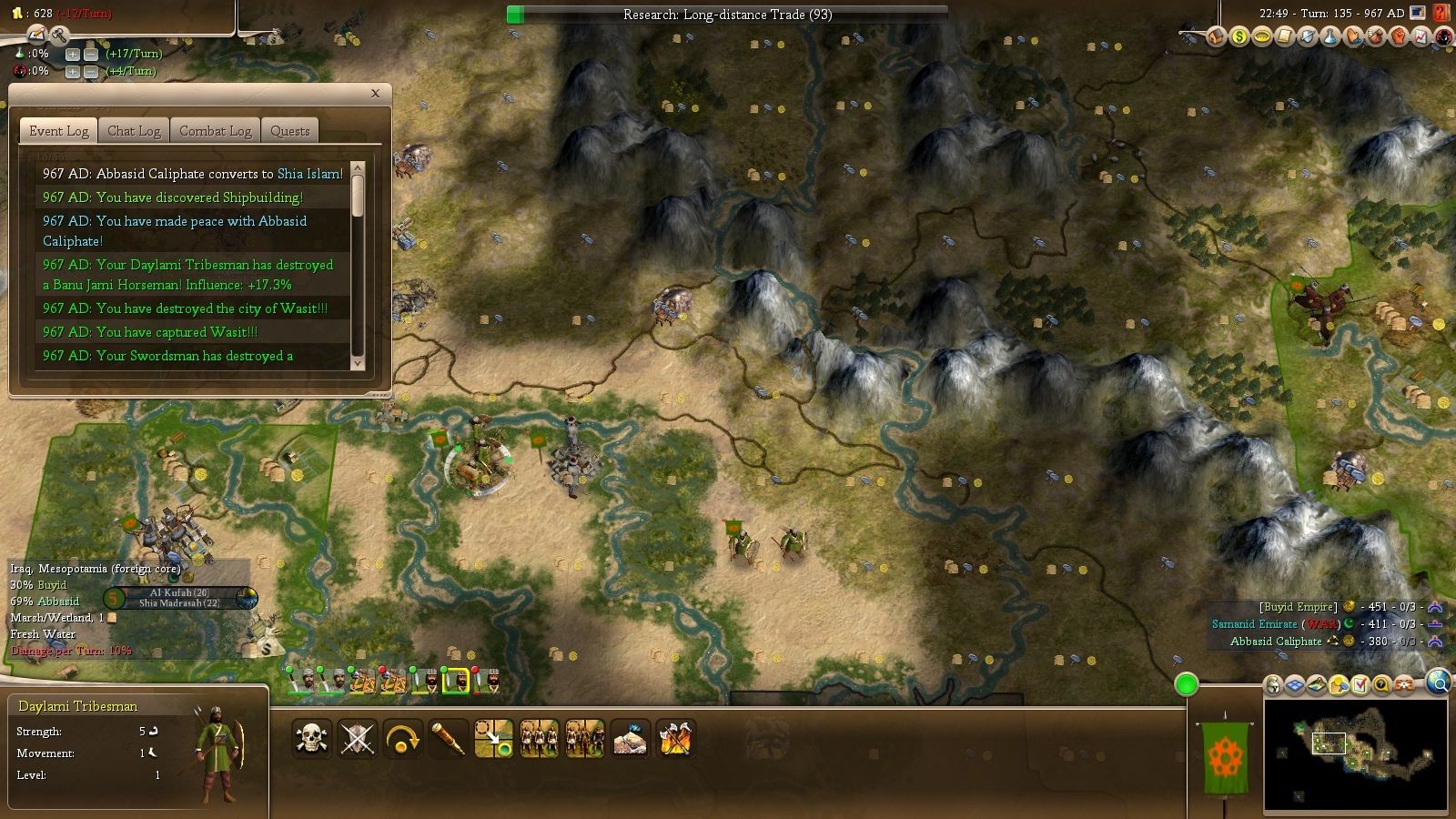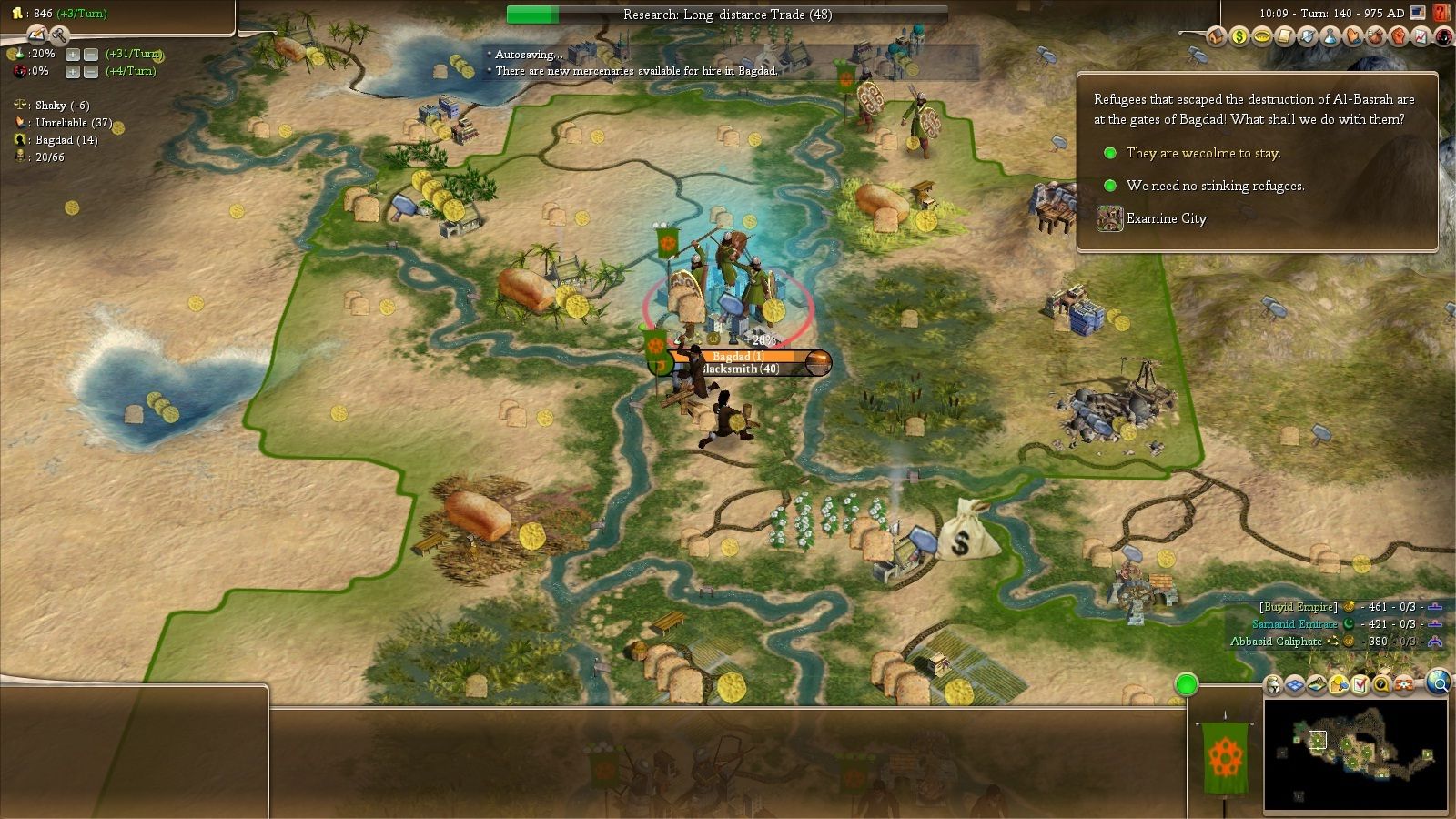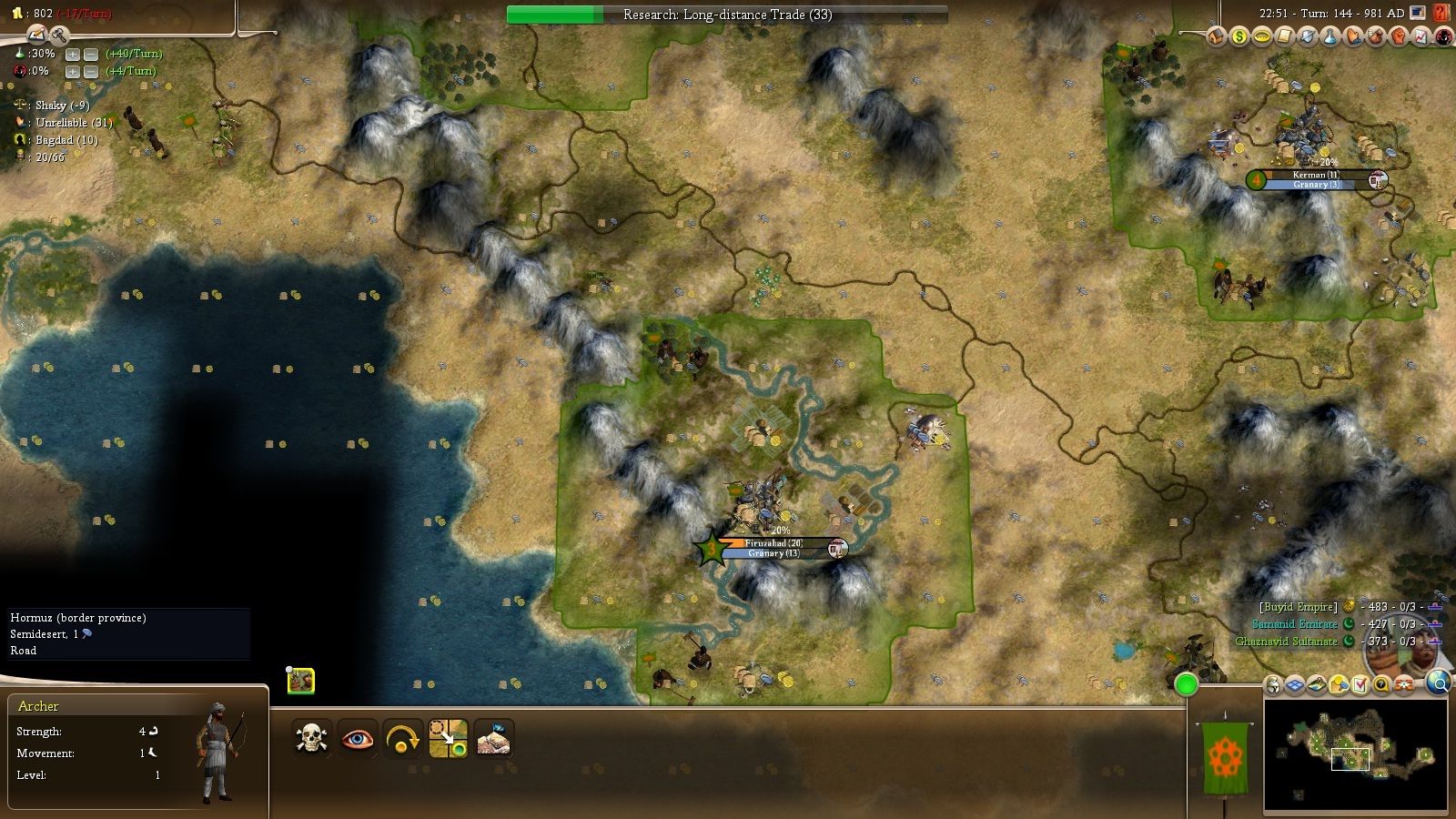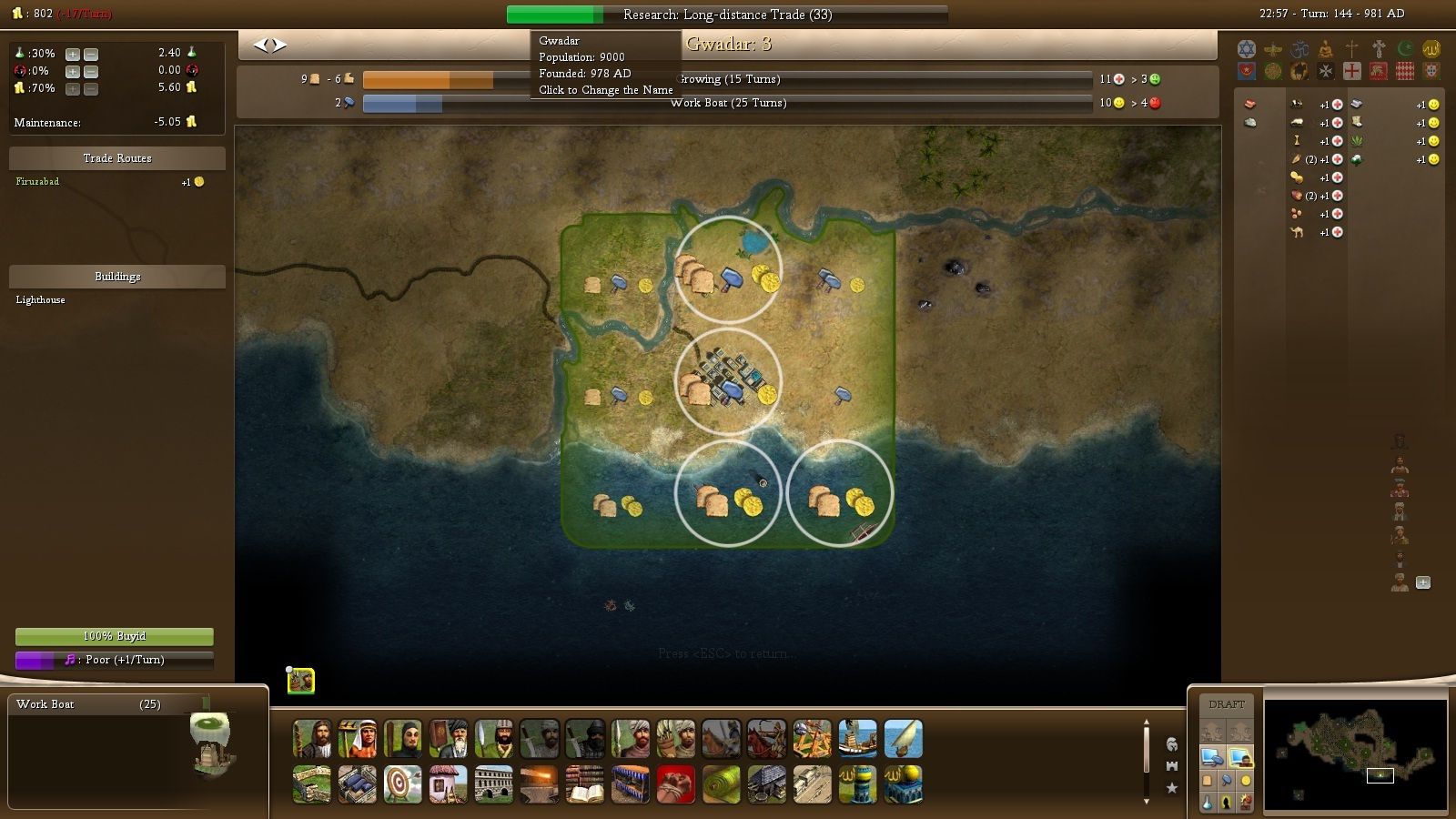Mod: Rhye's and Fall of Civilization
Modmod: The Sword of Islam
Civ(dynasty): Buyids
Buyid dynasty, also known as the Buyid Empire or the Buyids (آل بویه ), also known as Buwaihids or Buyyids, were a Shia Persian dynasty that originated from Daylaman. They founded a confederation that controlled most of modern-day Iran and Iraq in the 10th and 11th centuries. Indeed, as Dailamite Iranians the Buyids consciously revived symbols and practices of Persia's Sassānid dynasty. In fact, beginning with 'Adud al-Daula they used the ancient Sassānid title Shāhanshāh (شاهنشاه), literally meaning king of kings.
This story an attempt to recreate the glory of Achaemenid and Sassanid empires.
Credits:
Modmod: The Sword of Islam
Civ(dynasty): Buyids
Buyid dynasty, also known as the Buyid Empire or the Buyids (آل بویه ), also known as Buwaihids or Buyyids, were a Shia Persian dynasty that originated from Daylaman. They founded a confederation that controlled most of modern-day Iran and Iraq in the 10th and 11th centuries. Indeed, as Dailamite Iranians the Buyids consciously revived symbols and practices of Persia's Sassānid dynasty. In fact, beginning with 'Adud al-Daula they used the ancient Sassānid title Shāhanshāh (شاهنشاه), literally meaning king of kings.
This story an attempt to recreate the glory of Achaemenid and Sassanid empires.
Credits:
Spoiler :
Embryodead - creator SoI;
Wikipedia.org - text of historical insertion;
The Encyclopædia Iranica(iranicaonline.org) - text of historical insertion.
Wikipedia.org - text of historical insertion;
The Encyclopædia Iranica(iranicaonline.org) - text of historical insertion.
Last edited:

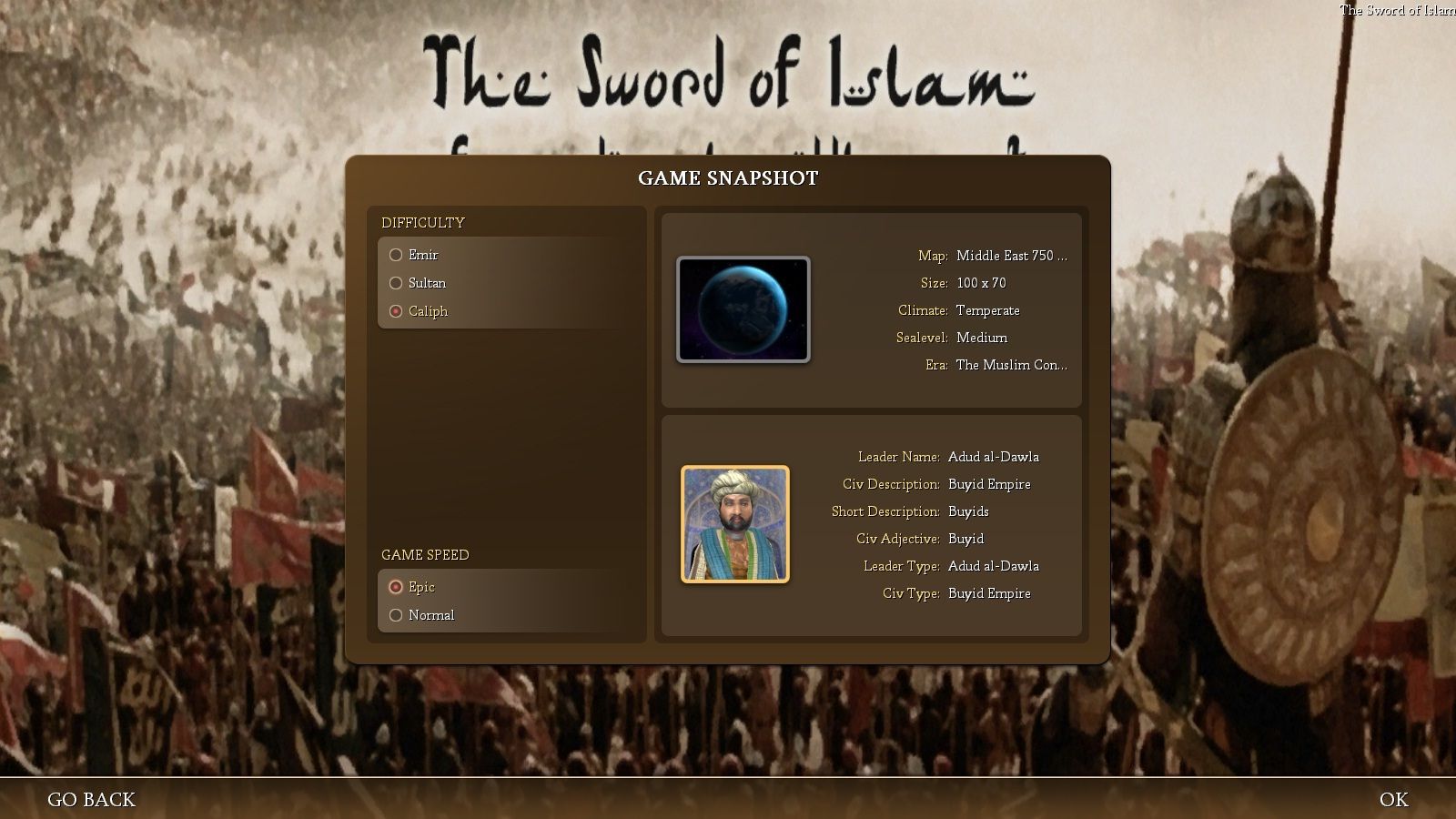
 ]
]